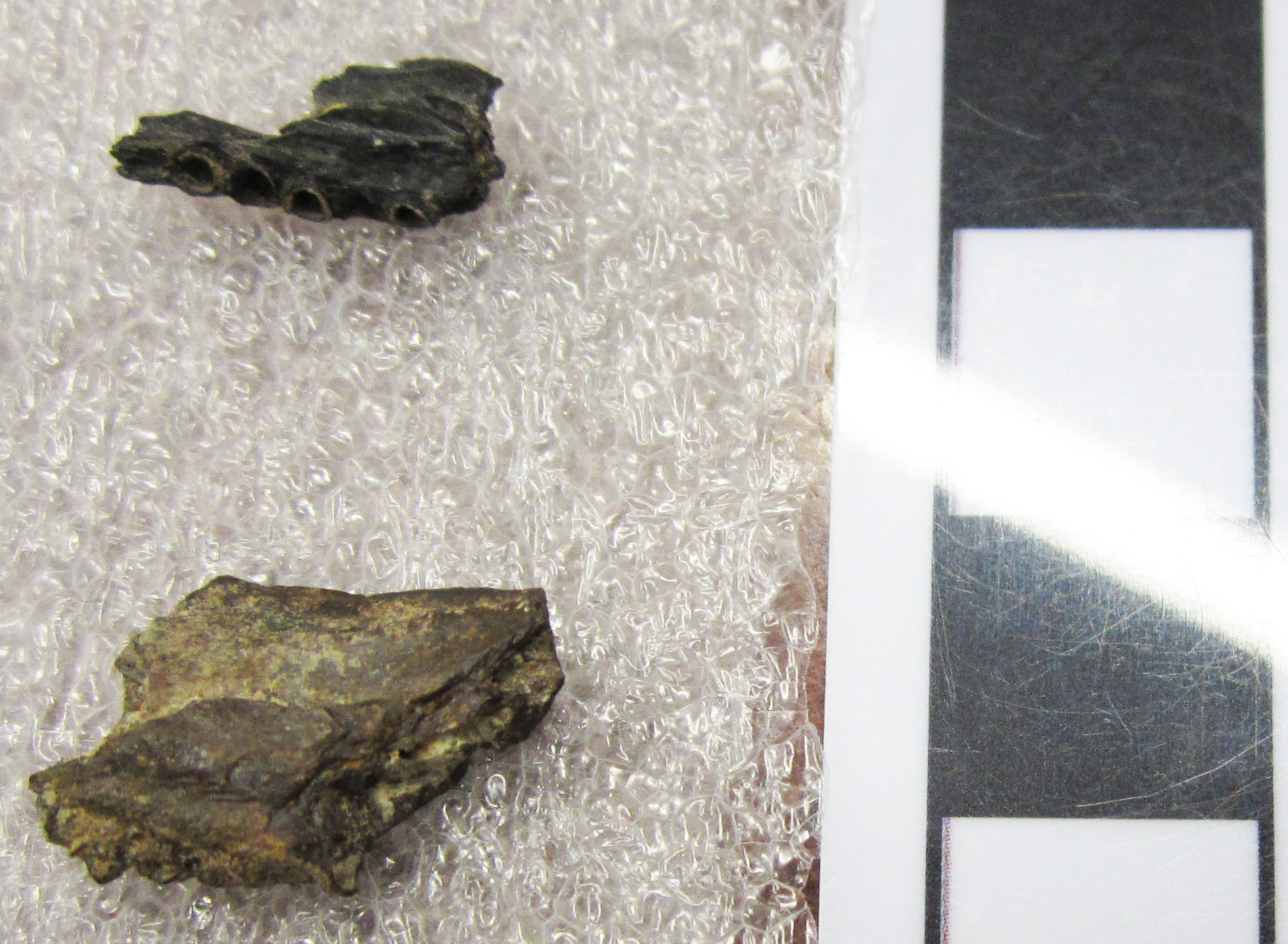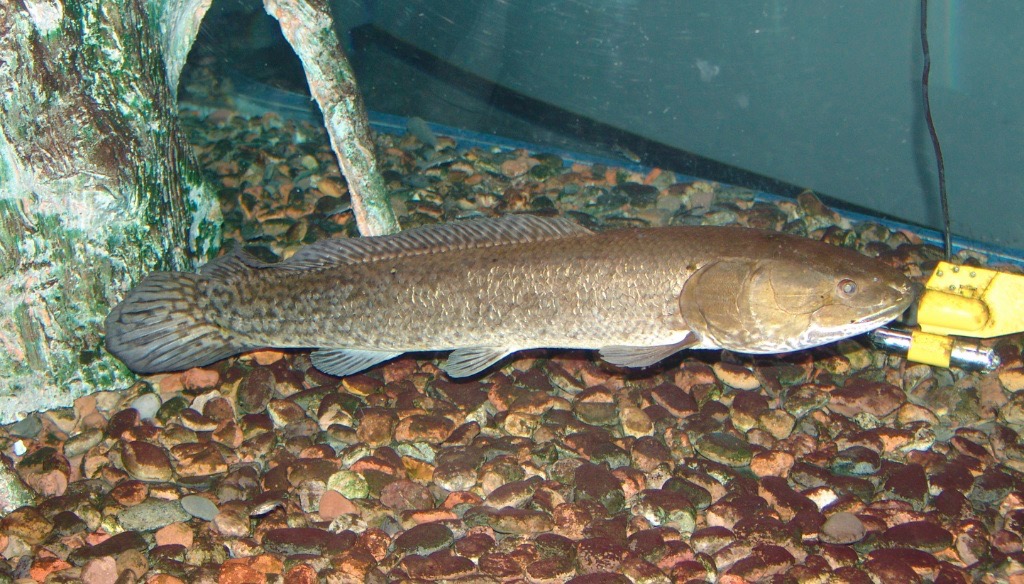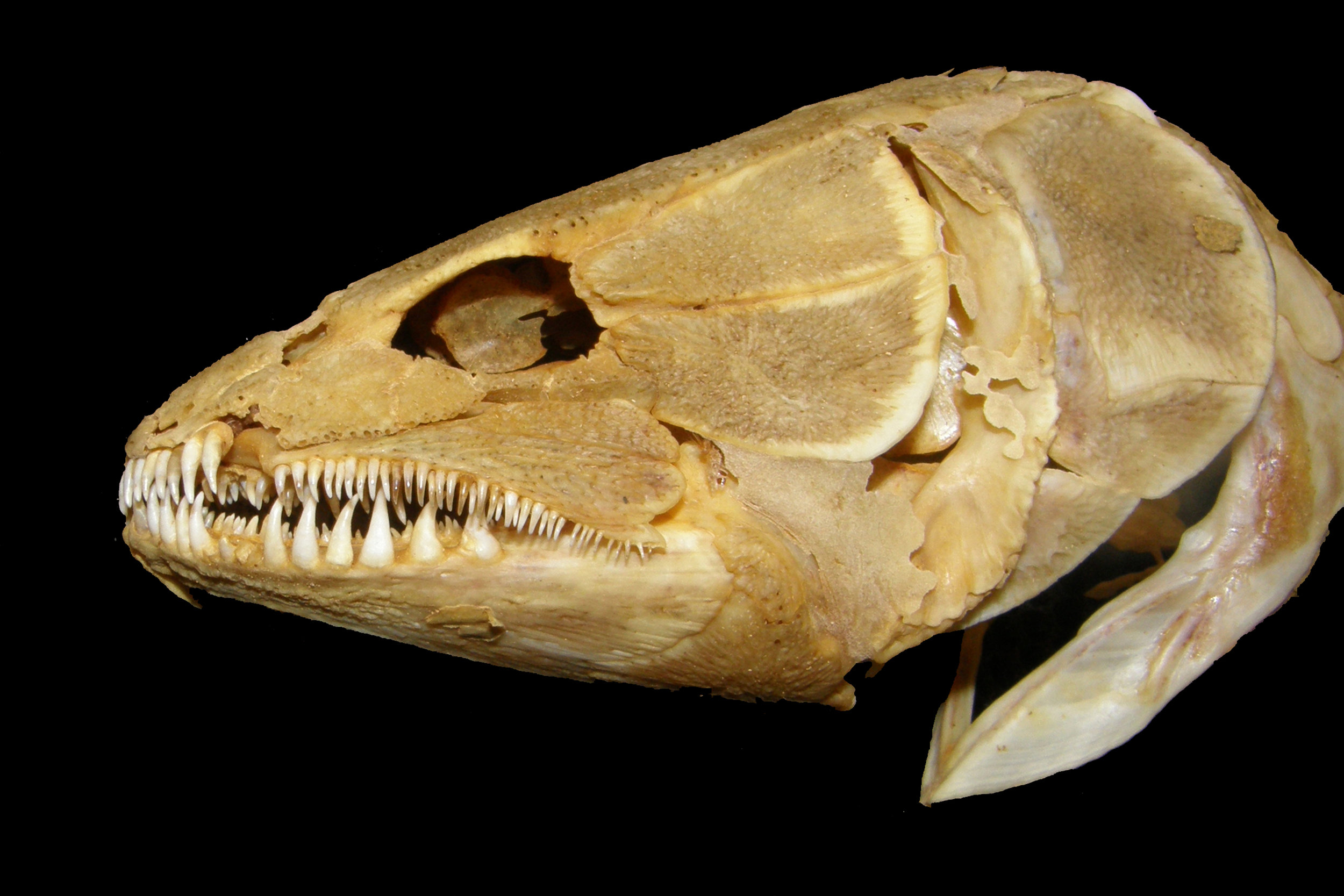 At the close of the age of dinosaurs in North America, dry land was prowled by a variety of large and small dinosaurian predators, such as Tyrannosaurus and dromaeosaurs, a.k.a. the raptors. The freshwater streams and lakes were home to very different, but no less voracious, meat-eaters. These bone fragments are pieces of the lower jaws of amiid fish. Amiids are a group of bony fishes with a long fossil record, but which today are restricted to a single surviving species, the bowfin (Amia calva), which hunts in the waterways of eastern North America. (Example below from the Arizona Museum of Natural History.)
At the close of the age of dinosaurs in North America, dry land was prowled by a variety of large and small dinosaurian predators, such as Tyrannosaurus and dromaeosaurs, a.k.a. the raptors. The freshwater streams and lakes were home to very different, but no less voracious, meat-eaters. These bone fragments are pieces of the lower jaws of amiid fish. Amiids are a group of bony fishes with a long fossil record, but which today are restricted to a single surviving species, the bowfin (Amia calva), which hunts in the waterways of eastern North America. (Example below from the Arizona Museum of Natural History.) These two fragments of lower jaws do not contain any preserved teeth, but clearly show the empty sockets for the teeth. Amiids are carnivorous, and wield a mouth full of formidable teeth for snaring prey, as shown in this bowfin skull at Ohio State University:
These two fragments of lower jaws do not contain any preserved teeth, but clearly show the empty sockets for the teeth. Amiids are carnivorous, and wield a mouth full of formidable teeth for snaring prey, as shown in this bowfin skull at Ohio State University: https://u.osu.edu/biomuseum/olympus-digital-camera-6/These jaw fragments were collected by local fossil hunter Harley Garbani in the Hell Creek Formation of Montana, which dates to the end of the Cretaceous Period, about 67 million years ago. They were donated to the Western Science Center by Mary Garbani.
https://u.osu.edu/biomuseum/olympus-digital-camera-6/These jaw fragments were collected by local fossil hunter Harley Garbani in the Hell Creek Formation of Montana, which dates to the end of the Cretaceous Period, about 67 million years ago. They were donated to the Western Science Center by Mary Garbani.
